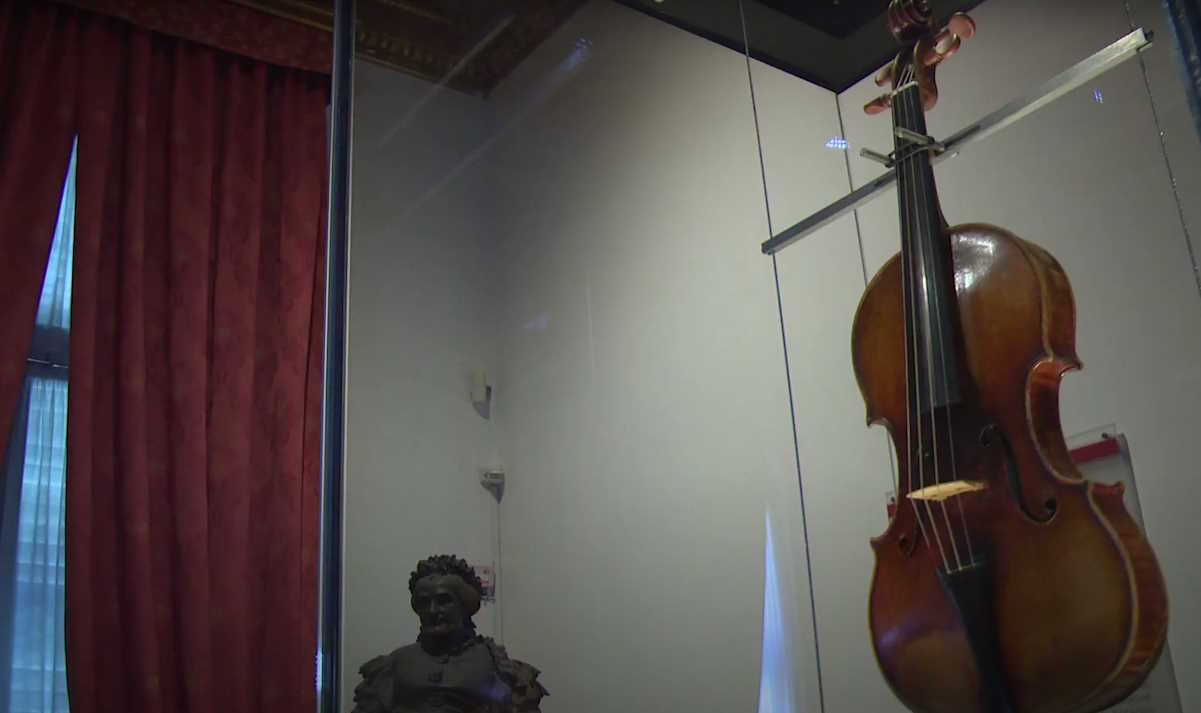
Niccolò Paganini's priceless violin has been examined by a particle accelerator to reveal its 'secrets'. It was built in 1743 by the famous Cremona musician Giuseppe Bartolomeo Guarneri del Gesù.
One of the most famous musical instruments in the world, Il Cannone, the favorite violin of the great Italian composer Niccolò Paganini, underwent a complete “medical” examination over the weekend (09-10.03.2024), using the latest technology, at the Grenoble Synchrotron in southeastern France, where it was Wipe it from all sides.
A “dream” or “wonderful experience”, according to the protagonists who hope to ascertain the condition of the instrument but also to understand what makes a violin “excellent”, mainly by analyzing the structure of its wood.
The “cannon”, as it was called because of the power of its “voice”, had belonged for nearly 40 years to the conductor, who bequeathed it to his hometown of Genoa.
It was made in 1743 by the famous Cremona thread maker Giuseppe Bartolomeo Guarneri del Gesù.
Today it is considered priceless and the most important exhibit of the Genoa Museum, as it is rarely released and always under strict security measures. Among the lucky few who are allowed to touch and play it are the winners of the biennial Paganini International Violin Competition in Genoa.
But this time, the violin made its way to Grenoble to undergo “non-destructive analysis” at the European Synchrotron (ESRF), a fourth-generation particle accelerator. The technique, called X-ray micro-tomography, has previously been tested on two other violins for safety reasons. It provides the ability to reconstruct a 3D image of the violin down to the molecular level of the wood. The experts who undertook the project explained that analysts can zoom in on the image locally to any point, no matter how small.
In this study, carried out at the request of the Paganini competition management, the instrument was placed inside a glass tube mounted on a machine, which in turn was surrounded by a glass frame, such that the temperature and humidity conditions were ideal. This was also the biggest concern for the team of scientists.
Paul Tavoro, the scientist in charge of the large engine room in which the experiment was conducted, said the analysis consisted of “a full scan at a depth of 30 micrometers to create a map of potential defects, and they ended up finding very few defects.” .
A very low dose of .
“The first goal is maintenance. “If the violin needs any repairs, we will have all the details” to repair the violin, explained Taforo, who is also an amateur violin player. Working with this violin “has been a dream,” he said. The second goal is to understand Scientists understand better why this violin has this sonic quality.
It will take months for the scan results to be fully analysed. Whatever the case, Alberto Giordano, the custodian of this precious instrument in Genoa, said that it is important to handle it with great care so that it is passed on to future generations without change.
“I'm getting older but it's still the same,” he joked. “It's like a picture of Dorian Gray, it stays as fresh as a rose.”

“Avid problem solver. Extreme social media junkie. Beer buff. Coffee guru. Internet geek. Travel ninja.”





More Stories
Top 20 Most Played Games in June 2024
Play Age of Mythology: Retold Playtest starting today!
Impressive Maniskin Concert in Greece